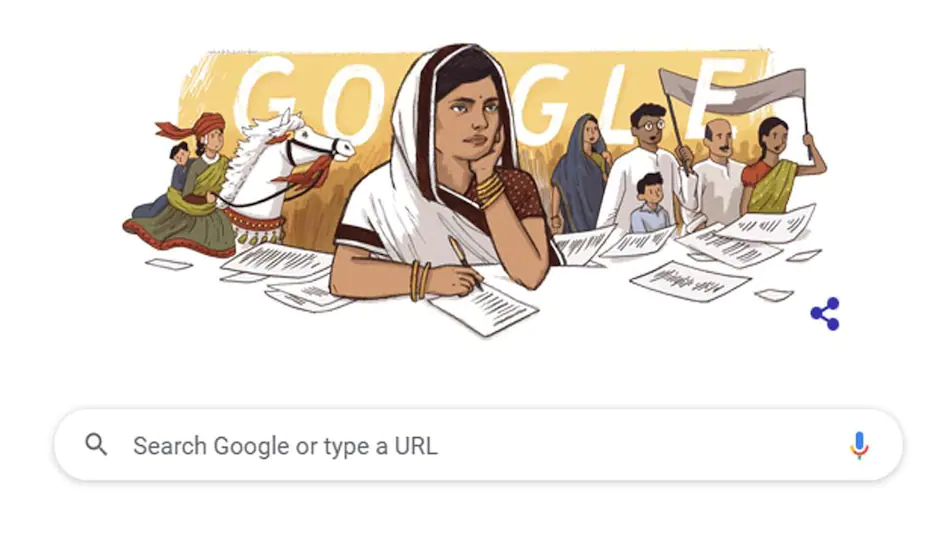New Zealand-based artist Prabha Mallya showed in the doodle Subhadra Kumari Chauhan wearing a saree and holding a pen in her hand with the paper. Behind her, a scene is depicted from “Jhansi ki Rani”, the most iconic poem of Hindi literature and the other side shows the freedom fighters. Subhadra Kumari was a freedom fighter and also a poet.
Mallya said, “The Rani of Jhansi seems to be such a kindred spirit to Subhadra”. Google, stated about her in a statement, “trailblazing writer and freedom fighter who rose to national prominence during a male-dominated era of literature”. Google paid tribute to Subhadra Kumari this Monday on her 117th birth anniversary.
Google said, “She was known to write constantly, even in the horse cart on the way to school, and her first poem was published at just nine years old. The call for Indian independence reached its height during her early adulthood. As a participant in the Indian Nationalist Movement, she used her poetry to call others to fight for their nation’s sovereignty,”.
Subhadra Kumari was born on 16th August 1904, in Nihalpur village of Prayagraj (earlier Allahabad), Uttar Pradesh. Soon she became part of the Indian Nationalist Movement and according to Google, “She used her poetry to call others to fight for their nation’s sovereignty. Her poetry remained uniquely underscored by her resolute nationalism,”. Her prose and poetry mainly surrounded the hardships Indian women faced during that time such as caste and gender discrimination. “Jhansi ki rani” is regarded as the most recited and iconic poem of Hindi literature, followed by “khilonewala”, “Tridhara”, “Mukul”, “Yeh Kadamb ka Ped” and “Balika ka parichay”. Through her poetry, she called others to fight for their nation.
In 1921, she and her husband both joined Mahatma Gandhi’s Non-cooperation movement. She was one of the non-violent anti-colonialists and became the first woman satyagrahi. She was also arrested in the National liberation struggle two times, first in 1923 and then in 1942. According to Google doodle, “In 1923, Chauhan’s unyielding activism led her to become the first woman satyagrahi, a member of the Indian collective of nonviolent anti-colonialists to be arrested in the struggle for national liberation.
She continued to make revolutionary statements in the fight for freedom both on and .off the page into the 1940s, publishing a total of 88 poems and 46 short stories”. She was also a member of the Legislative assembly, and when she was on her way to Jabalpur, where she was going to attend an assembly session, on February 15th, 1948, died in a car accident. An Indian Coast Guard ship was named after her as ‘ICGS Subhadra Kumari Chauhan’, to honor her outstanding and perfect work. There is also a statue of her’s built-in Jabalpur, Madhya Pradesh in front of the municipal corporation office.
Another statement by Google was, “Chauhan’s poetry remains a staple in many Indian classrooms as a symbol of historical progress, encouraging future generations to stand up against social injustice and celebrate the words that shaped a nation’s history”.


